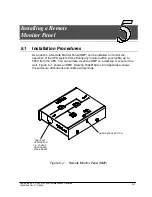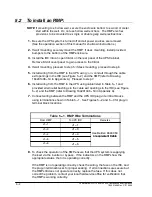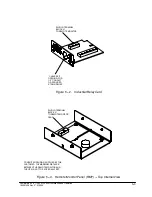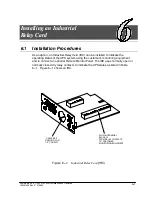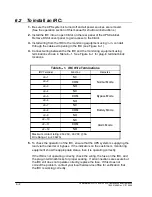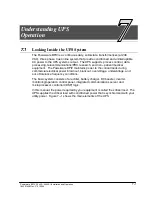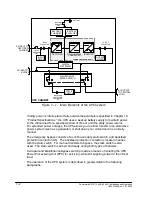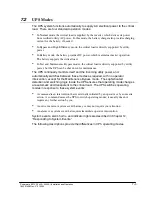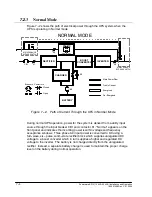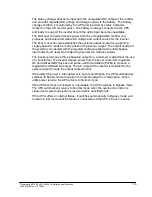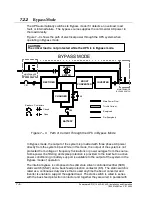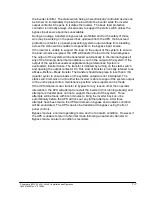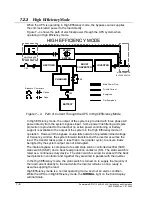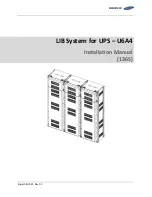
7--7
Powerware BPIV (10 kVA--30 kVA) Installation and Operation
164201406 Rev. C 013004
the inverter rectifier. The static switch being an electronically controlled device can
be turned on immediately to pickup the load from the inverter while the inverter
output contactor K3 opens to isolates the inverter. The back feed protection
contactor is normally always closed ready to support the static switch unless the
bypass input source becomes unavailable.
During an outage, transfers to bypass are prohibited and for the safety of those
who may be working on the power lines upstream from the UPS, the back feed
protection contactor is opened, preventing system output voltage from bleeding
across the static switch snubber components to the bypass input source.
If the inverter is unable to support the load on the output of the system, to ensure
the load remains energized, the UPS will transfer the load to the internal bypass.
The output of the system will be transferred automatically to the internal bypass if
any of the following abnormal conditions occur on the output of the system: If the
output of the system exceeds acceptable voltage tolerances; System is
overloaded; Inverter failure. The transfer is initiated by turning on the static switch
and opening the output contactor K3. This kind of transfer is normally referred to as
a Make---Before---Break transfer. The transfer should take place in less than 4 mS
(quarter cycle) to ensure loads on the systems output are not interrupted. The
static switch remains on until either the inverter is able to support the system output
or the unit is placed into a maintenance position where repairs can be made.
If the UPS initiates its own transfer to bypass for any reason other than operator
intervention, the UPS will attempt to restart the inverter (if not running already) and
attempt a retransfer back on line to support the output of the system. Three
attempts will be made within ten minutes to bring the inverter back on---line
automatically before the UPS will lock out any further attempts. After three
attempts have been made, the UPS will remain in bypass and an alarm condition
will be enunciated. The UPS can also be transferred to bypass using the front
panel controls.
Bypass mode is a normal operating mode, and not an alarm condition. However, if
the UPS is unable to return to Normal mode following an automatic transfer to
Bypass mode, an alarm condition is recorded.
Summary of Contents for BPIV
Page 1: ...www powerware com BPIV INSTALLATION OPERATION MANUAL UPS 10 15 kVA 20 30 kVA...
Page 263: ......
Page 264: ...164201406 Rev C 164201406C...

